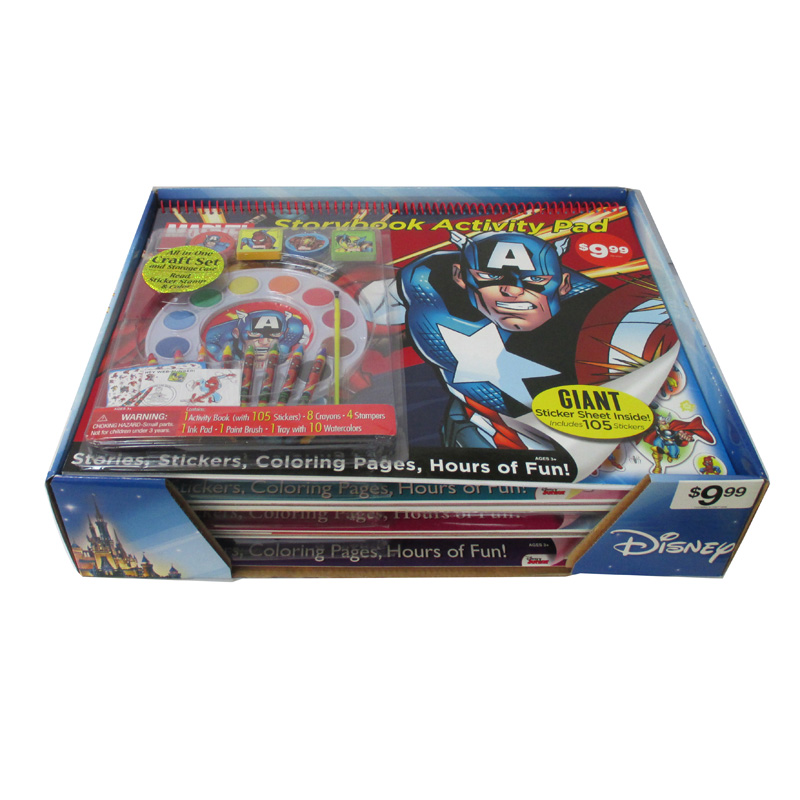- English
- 简体中文
- Español
- Português
- русский
- Français
- 日本語
- Deutsch
- tiếng Việt
- Italiano
- Nederlands
- ภาษาไทย
- Polski
- 한국어
- Svenska
- magyar
- Malay
- বাংলা ভাষার
- Dansk
- Suomi
- हिन्दी
- Pilipino
- Türkçe
- Gaeilge
- العربية
- Indonesia
- Norsk
- تمل
- český
- ελληνικά
- український
- Javanese
- فارسی
- தமிழ்
- తెలుగు
- नेपाली
- Burmese
- български
- ລາວ
- Latine
- Қазақша
- Euskal
- Azərbaycan
- Slovenský jazyk
- Македонски
- Lietuvos
- Eesti Keel
- Română
- Slovenski
- मराठी
How Can I Improve My Sketch Book Layout
2025-10-17
I’ve spent countless hours with my Sketch Book open, feeling that familiar mix of excitement and frustration. The blank pages are full of potential, yet organizing them in a way that feels both creative and coherent has always been my challenge. Maybe you’ve felt it too—that your brilliant ideas are trapped in a disorganized collection of pages. For years, I believed my layout struggles were a lack of artistic skill, but I discovered the secret often lies in the foundation: the Sketch Book itself. This realization is what led me to appreciate the craft behind a brand like Starlight Printing, which understands that an artist's tools should enable creativity, not hinder it.
What Are the Core Principles of a Great Sketch Book Layout
Before we dive into tools and techniques, we need to establish a mindset. A great layout isn't about rigid rules; it's about creating a visual flow that tells the story of your creative process. I've found that focusing on three key principles can transform how you use your Sketch Book.
-
Establish a Clear Visual Hierarchy. Guide the viewer’s eye through your pages. Use larger, more detailed sketches as focal points and support them with smaller studies, notes, or swatches.
-
Embrace Negative Space. Do not fear empty areas. White space is not wasted space; it gives your artwork room to breathe and helps prevent the layout from feeling cluttered and overwhelming.
-
Create a Consistent Thread. This could be a color palette, a thematic element, or a specific style of annotation that runs through several pages. This thread ties your entire Sketch Book together into a unified body of work.
Which Sketch Book Features Truly Impact Page Layout
For the longest time, I thought any bound paper would do. I was wrong. The physical properties of your Sketch Book are the unsung heroes of a great layout. A subpar book can fight you every step of the way, while a well-crafted one becomes a seamless extension of your vision. This is where the specifications matter. Let’s look at the features that make a tangible difference.
| Feature | Why It Matters for Layout |
|---|---|
| Paper Weight & Texture | Heavier paper (e.g., 120gsm+) prevents bleed-through from inks and markers, allowing you to use both sides of the page confidently. Texture (tooth) affects how pencils and pastels lay down, influencing the final look of your art. |
| Binding Method | A lay-flat binding is non-negotiable. It allows you to work on a perfectly flat surface across the gutter, ensuring no part of your drawing is lost in the spine and making two-page spreads a viable option. |
| Page Format & Size | A larger format provides more room for complex compositions, while a smaller one is great for quick studies. The aspect ratio (portrait, landscape, square) sets the stage for your entire layout narrative. |
When I evaluated my own needs against these features, the Starlight Printing Professional Artist Series consistently stood out. It is not just a notebook; it is a designed tool.
How Does the Starlight Printing Professional Series Enhance My Layout
I was skeptical until I tried one. The difference was immediate. The specific product parameters of the Starlight Printing series are engineered to directly address the layout challenges artists face. Here is a detailed breakdown of what you are getting.
-
Archival-Grade, Acid-Free Paper: At 150gsm, this paper is a workhorse. It handles light watercolor washes, ink, and collage without a hint of buckling or bleed-through. This durability means every page, front and back, is a viable canvas for your layout.
-
Lay-Flat Swiss Binding: This is the game-changer. The binding allows the Sketch Book to open completely flat, eliminating the frustrating "gutter gap" in the middle. You can finally create seamless, breathtaking two-page spreads without compromise.
-
Customizable Cover Options: With a range of premium, durable covers, you can choose a Sketch Book that inspires you to pick it up every day. A tool you love is a tool you will use consistently.
To give you a clear, professional overview, here are the core parameters of their flagship product:
| Starlight Printing Professional Series - Technical Parameters |
|---|
| Paper Weight: 150gsm (Ideal for mixed media) |
| Paper Finish: Medium Grain (Perfect for pencil, charcoal, and light washes) |
| Page Count: 192 pages (96 sheets) |
| Binding: Lay-Flat Swiss Binding |
| Cover Material: Premium Vegan Leather |
| Available Sizes: A4, A5, and B5 |
Your Sketch Book FAQ Answered by a Pro
Over the years, I've been asked the same layout-related questions time and again. Here are my detailed answers to the most common Sketch Book FAQs.
What is the best way to start the first page of a new Sketch Book
Conquer the "blank page anxiety" by not putting pressure on it to be a masterpiece. I recommend creating a thematic title page, a simple mood board with color swatches and textures, or even just a bold, handwritten quote. This breaks the ice and sets the tone for the entire book without the stress.
How can I create a cohesive flow between different projects in one Sketch Book
Use transitional pages. If you are moving from a landscape series to a portrait study, dedicate a spread to small, quick sketches that blend both themes or use a page for written reflections on what you learned. This acts as a visual palate cleanser and makes the shift feel intentional rather than random.
My Sketch Book looks messy and unorganized, what should I do
Embrace the "mess" as part of the process, but use structure to contain it. Dedicate specific pages for rough ideation and label them as such. Use a consistent color for your written notes or create small, neat borders around your sketches to frame them. A little intentionality can make chaotic creativity look curated and insightful.
Are You Ready to Transform Your Creative Process
Improving your Sketch Book layout is a journey of understanding both technique and tool. It is about moving from seeing your sketchbook as a passive receptacle for ideas to treating it as an active, collaborative partner in your creative journey. The principles we discussed provide the framework, but the right Sketch Book provides the canvas—a canvas that should empower, not limit.
Your art and your ideas deserve a foundation that does them justice. Stop fighting with your tools and start creating with confidence. **Visit the Starlight Printing website today to explore the Professional Artist Series and see how the right Sketch Book can unlock your potential. Our detailed product guides and customer galleries are there to help you make the perfect choice for your art.
Contact us if you have any specific questions about paper or format; our team of artist advisors is ready to help you find your perfect creative partner.






